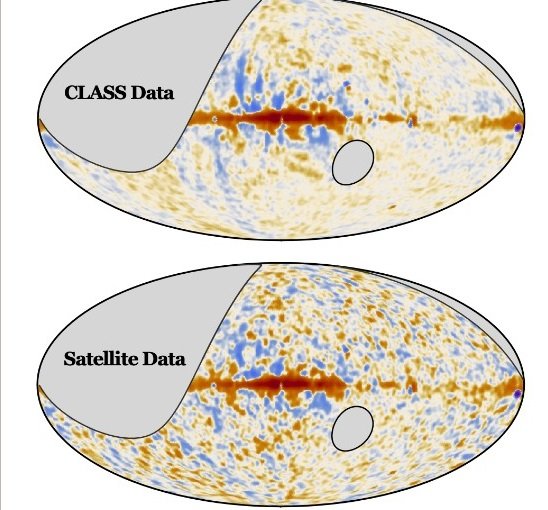
High up in the Andes mountains of northern Chile, a small observatory has been busy capturing a clearer picture of the universe than we’ve ever seen before.
This observatory, part of the Cosmology Large Angular Scale Surveyor (CLASS) project led by astrophysicists from Johns Hopkins University, has created detailed maps covering 75% of the sky.
Their goal?
To understand the universe’s origins and how it has evolved over billions of years.
The U.S. National Science Foundation supports this groundbreaking work, which focuses on studying the microwave polarization of the cosmic microwave background (CMB).
This might sound complex, but it’s essentially about examining the way light from the early universe wiggles as it travels through space.
By looking at these wiggles, scientists can learn about the universe’s infancy, back when galaxies, stars, and planets were just beginning to form.
The findings from this project are set to be published in The Astrophysical Journal. They represent a significant leap forward in our ability to filter out the “noise” created by our own galaxy, the Milky Way, to focus on the CMB.
This ancient light acts like a cosmic echo of the Big Bang, offering clues about the universe’s early moments and its subsequent 13.8-billion-year journey.
Tobias Marriage, a professor at Johns Hopkins who co-leads the CLASS team, explains that studying the polarization of the CMB allows astrophysicists to trace back to the very dawn of time.
This research connects the dots from the universe’s initial conditions to the cosmic landscape we observe today.
The CLASS project’s new maps zero in on a phenomenon called linear polarization, generated by electrons moving rapidly around the Milky Way’s magnetic fields. While this helps scientists understand our galaxy better, it also complicates their view of the early universe.
However, the CLASS team’s work has dramatically improved our grasp of these physical processes, revealing details about the universe’s infancy with unprecedented clarity.
Charles L. Bennett, another Johns Hopkins professor involved in the project, highlights how these new results refine our understanding of both the Milky Way and the early universe beyond what previous space missions have achieved.
This accomplishment is especially remarkable given that the CLASS observatory is based on the ground, not in space.
Ground-based observatories like CLASS have an advantage over space missions because they can be continuously updated with new technologies.
For this project, the team developed innovative tools, including special feeds that guide cosmic radiation onto detectors, custom-designed detectors themselves, and new types of polarization modulators, all in collaboration with NASA.
Joseph Eimer, a lead author of the study and an astrophysicist at Johns Hopkins, points out the importance of accurately measuring the Milky Way’s emissions. Understanding our galaxy’s light allows scientists to filter it out and examine the CMB more closely.
The CLASS project’s success in doing so marks it as a leader in ground-based polarization measurements.
The observatory’s location in the Parque Astronómico Atacama, under the Agencia Nacional de Investigación y Desarrollo, plays a key role in its achievements. At an altitude of 16,860 feet, it’s ideally situated for peering into the depths of space.
The CLASS team’s work sets a new standard for observing the universe at large scales from Earth. With more data already collected and ongoing observations, the future of cosmic exploration looks brighter than ever. This research not only deepens our understanding of the cosmos but also paves the way for future discoveries about our universe’s most ancient mysteries.



